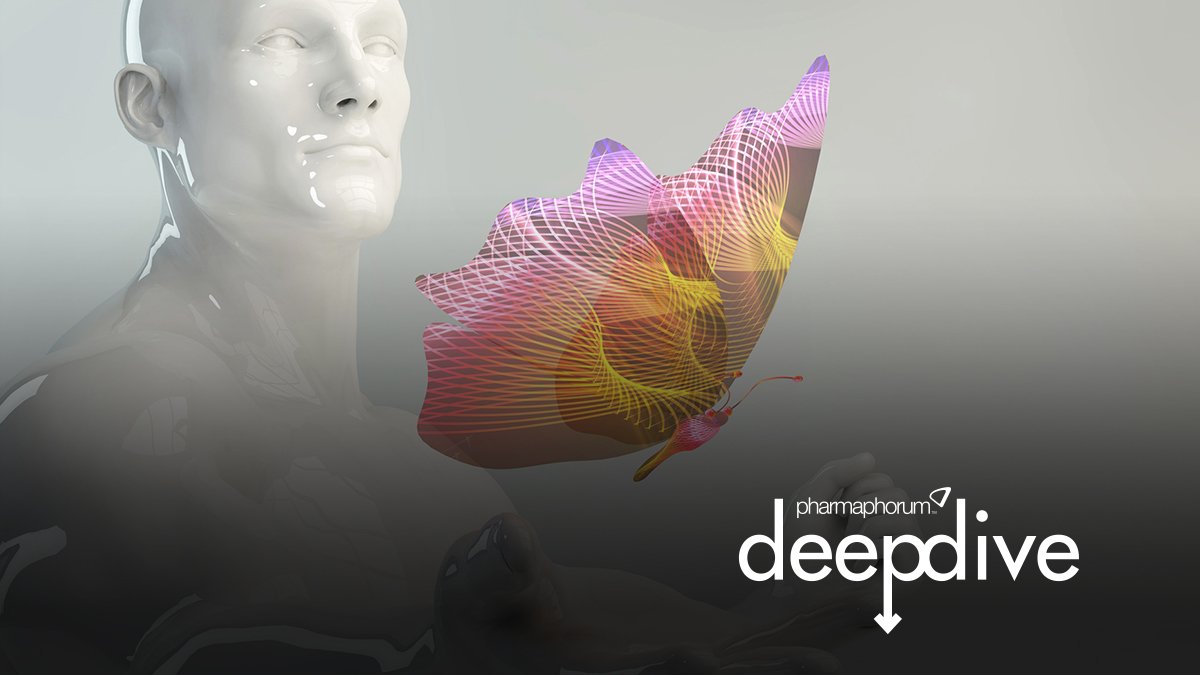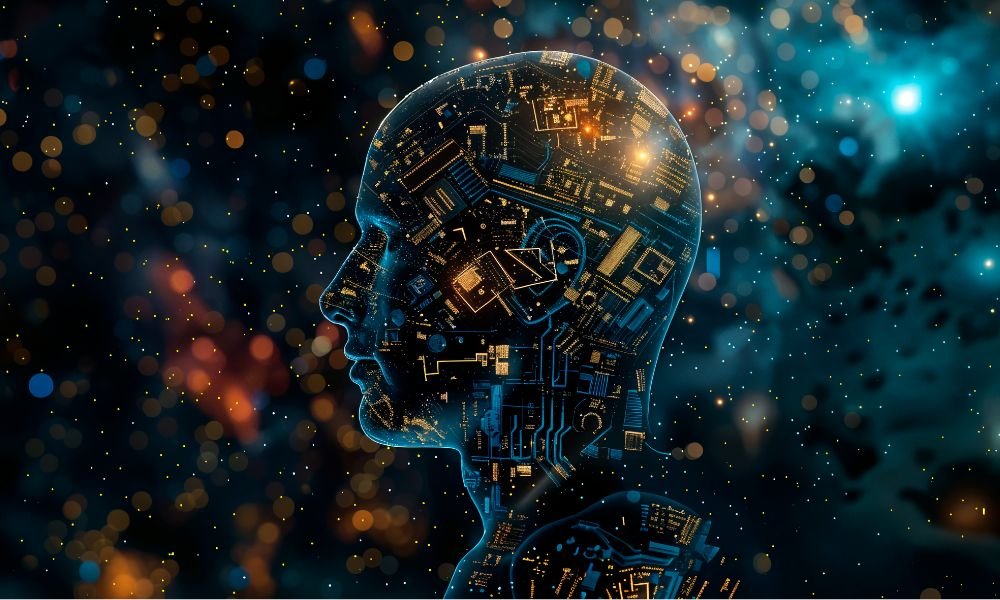Tools & Platforms
Reimagining the role of medical science liaisons in the age of AI

Content generation: The low-hanging fruit
Medical affairs teams spend a lot of their time generating different kinds of content, including regulatory writing, educational materials, and conference presentations. Although this content certainly needs to be reviewed by humans for accuracy, AI can be, and in many cases already is being, used to speed up the process of content generation.
“If someone today is a medical writer at Pfizer and they’re drafting peer-reviewed publications for Pfizer’s phase 3 clinical trials, the drafting of that publication is a total waste of time,” Katz said. “AI could draft that publication quicker, faster, better, and the person should be a reviewer instead of an author, basically. Their function changes. That’s a good example. Another example is someone that’s creating a poster for ASCO. Why are you formatting this thing? AI can create a much prettier poster in 10 seconds than you can ever create, and you should edit it instead of author it.”
MSLs themselves also need to generate a lot of content to do their work connecting with HCPs.
“Generating content is a large part of what we do,” said Malloy. “Patient lay summaries, manuscripts, you name it. We are trying to augment their capability to do exactly what they’ve been doing for years.”
Administrative support: A huge opportunity
Stewart mentioned that her early career as an MSL involved a lot of spreadsheets and detective work. But increasingly, that work can be done by AI systems.
“It’s cut the administrative work down significantly, and we’re able to do things much faster and be more agile with that work,” Stewart said. “I mean, of course, what I’m finding is there’s always a need to validate the information that’s given to us when it’s generated through an AI model, but it’s such a time saver. We’re able to get way more done with fewer people on the team than we were when I first started.”
But administrative support goes beyond insights generation. AI can also help MSLs manage their schedules and responsibilities more efficiently.
H1’s whole business is built around creating a database that makes it easier for MSLs to find out everything they need to know about healthcare providers, from their areas of expertise to what conferences they’re planning to attend. Now they are building AI agents that sit on top of that database.
“For BioMarin, we created a digital MSL who basically every day monitors the latest HCP’s information, recommends what you should do with that HCP, it predicts what that HCP will do,” Katz said. “It can then automate all your emails that you want to send them, do follow-up meetings, monitor the latest scientific literature. You can have it draft or automatically send the emails. It just reduces everything that an MSL needs to do. It sits on top of an MSL. Each MSL is paired with a digital MSL, and boom, that’s what they do for you.”
Training: Improving MSL soft skills
While information management is a huge part of an MSL’s job, equally important are the soft skills of connecting to healthcare providers, gaining their trust, and building a rapport. This is the part of the job where the human element is the most important. But AI can still be helpful.
“Because they are so well-versed and they do that constant upkeep and research into their field, MSLs have an understanding of the science that’s really very solid,” Malloy said. “But it’s in that relationship management, conversational skill building that we noticed a real gap. That’s where the MSL Interact tool really comes into play. It’s filling that gap, that need for MSLs to feel confident.”
MSL Interact is a training platform developed by Inizio that leverages the ability of large language models to take on different personas as they interact with users.
“What we’re doing is taking generative AI, training it, giving it a persona, ingesting information that is both publicly available and that is client-specific. We’re targeting different therapeutic areas. We’re engaging clients. They’re giving us their specific information,” Malloy explained. “We’re able to create this HCP persona that maps to different types of doctors or healthcare providers that these MSLs may be meeting in the field. Then the MSLs can come into the tool and actually have a practice conversation.
Tools & Platforms
The Hartford Opens Technology Center in Hyderabad to Advance Innovation and AI Capabilities | Machine Maker – Latest Manufacturing News | Indian Manufacturing News – Latest Manufacturing News | Indian Manufacturing News

The Hartford, a prominent U.S.-based insurance provider, has announced the launch of its new technology center in Hyderabad, India. This expansion represents a major step in the company’s technology transformation and underscores its focus on innovation, agility, and global talent development.
The new center will serve as a hub for engineering excellence with a focus on Artificial Intelligence (AI), digital transformation, and cutting-edge technology solutions. Designed to foster a start-up-like environment, it will support rapid prototyping and experimentation across global teams. The Hyderabad facility will complement The Hartford’s existing technology centers in Hartford, Connecticut; Chicago, Illinois; and Charlotte, North Carolina, contributing to the company’s broader innovation strategy.
“This is an exciting time for The Hartford as we accelerate the integration of AI as a core driver of innovation in our products and processes,” said Shekar Pannala, Chief Information Officer at The Hartford. Jeff Hawkins, Chief Data, AI and Operations Officer, added, “We are not just adopting new technologies, but expanding our capabilities in data analytics and AI to deliver personalized, efficient, and reliable customer experiences.”
To ensure a smooth setup and operational success from the start, The Hartford has partnered with Capgemini, a global leader in business and technology transformation. With over 1.5 million engineering graduates produced annually, India remains a hub for technical expertise. Hyderabad’s infrastructure, strategic location, and vibrant innovation ecosystem make it an ideal choice for the new center. The Hartford’s presence in India is expected to create career opportunities for professionals skilled in AI, data science, cloud computing, and digital engineering.
Founded in 1810, The Hartford is a Fortune 200 company with more than 19,000 employees worldwide, headquartered in Hartford, Connecticut. It supports millions of businesses of all sizes and tens of millions of individuals and families, helping them confidently navigate challenges and mitigate risks.
With over 200 years of underwriting, actuarial, and risk management expertise, along with a decade of digital modernization efforts, The Hartford is leveraging AI and advanced analytics to enhance decision-making and unlock new value. The company is actively recruiting technology professionals in India who are eager to shape the future of insurance through innovation.
The Hartford is a leading provider of property and casualty insurance, employee benefits, and mutual funds. Renowned for its expertise spanning more than two centuries, the company is recognized for its commitment to service excellence, sustainability, trust, and integrity.
Tools & Platforms
AI Thinking Cap Transforms Thoughts into Text Seamlessly

An AI-powered cap is redefining communication by using advanced sensors and AI to translate brain signals into text, making it one of the most innovative AI wearable thought devices today.
Imagine wearing a cap that can instantly turn your thoughts into text without speaking or typing. This is no longer science fiction. The new AI thinking cap is a revolutionary invention that uses artificial intelligence to decode brain signals and convert them into written words. This breakthrough innovation is set to change how people communicate, especially those with speech impairments or disabilities.
This AI-powered cap is a leap forward in wearable technology, combining advanced sensors and machine learning to capture and interpret neural activity. As an AI wearable thought device, it provides a seamless, hands-free experience, allowing users to communicate faster and more naturally than ever before.
What is the AI Thinking Cap?
The AI thinking cap is a wearable device designed to read brainwaves and transform thoughts into text in real time. Unlike traditional speech-to-text tools, this cap bypasses vocal cords altogether, decoding signals directly from the brain.
Equipped with sensors that monitor electrical activity, the cap sends data to an AI system that processes the signals and translates them into readable text. This innovative wearable translates thoughts with impressive accuracy, enabling users to communicate without the need for speaking or typing.
This technology has the potential to revolutionize communication for people with physical disabilities, allowing them to express themselves independently and effortlessly. It also offers new possibilities for multitasking and quick messaging in everyday life.
How the AI-Powered Cap Works
The secret behind the AI-powered cap lies in its blend of brain-computer interface technology and artificial intelligence. The cap’s sensors detect subtle brain signals associated with language processing. These signals are then analyzed using machine learning algorithms trained to recognize patterns corresponding to specific words or phrases. Once interpreted, the AI system converts these neural signals into text, which can be displayed on connected devices like smartphones, tablets, or computers.
The entire process happens almost instantaneously, offering users a smooth and natural communication flow. This AI wearable thought device continuously improves through user interaction, learning individual brain patterns to increase accuracy over time. This personalized adaptation makes the cap more effective for each user, whether they are writing a message, controlling smart home devices, or even creating content hands-free.
Benefits and Potential Applications
The AI thinking cap offers a wide range of benefits, making it one of the most exciting developments in wearable technology today:
- Enhanced Communication: For people with speech or motor impairments, the cap provides an unprecedented way to communicate independently.
- Hands-Free Convenience: Users can write emails, send texts, or control devices without lifting a finger.
- Increased Productivity: Multitasking becomes easier when thoughts can be directly translated into text during meetings or while working.
- Accessibility: The device can serve as a vital tool for those with disabilities, improving quality of life.
Beyond personal use, this wearable translates thoughts in ways that could transform industries such as healthcare, education, and even entertainment. Imagine classrooms where students can express ideas silently or artists crafting digital works with thought alone.
Challenges and Future Outlook
While the AI-powered cap shows great promise, it also faces challenges. Accurate translation of complex thoughts remains difficult, and the technology requires extensive calibration to individual brain patterns. Privacy concerns about reading brain activity also need careful attention.
However, ongoing research is rapidly improving the device’s accuracy and usability. As AI algorithms get smarter and sensor technology advances, the cap is expected to become more affordable and accessible. This will open the door for widespread adoption, making the AI thinking cap a staple in the future of communication technology.
Tools & Platforms
Setback for Apple? Key AI head executive Robby Walker could leave amid delays to Siri upgrade
Apple is set to lose one of its most senior artificial intelligence executives, with Robby Walker preparing to leave the company next month, according to a Bloomberg report citing people familiar with the matter.
Walker, who has been with the technology giant since 2013, currently serves as senior director of Apple’s Answers, Information and Knowledge team, a role he assumed in April. He previously oversaw the Siri voice assistant before its management was transferred earlier this year to Craig Federighi, Apple’s software chief.
AI challenges and departures
His departure comes as Apple faces mounting scrutiny over its cautious approach to AI development. While rivals have raced ahead with advanced models, the iPhone maker’s Apple Intelligence suite, including its integration of ChatGPT, has rolled out slowly, and a major update to Siri has been delayed until 2026.
Apple has seen a string of AI specialists exit in recent months, with several joining Meta Platforms. Those moves included Ruoming Pang, who headed Apple’s AI models, alongside researchers Mark Lee and Tom Gunter, all of whom have joined Meta’s Superintelligence Labs division.
Reports earlier this year suggested that Apple CEO Tim Cook had shifted oversight of Siri to Mike Rockwell, vice president of the Vision Products Group, amid concerns about the performance of AI chief John Giannandrea.
Recent product launch and AI strategy
At its annual product launch last week, Apple unveiled new iPhone models, including the slimmer iPhone Air, but offered little clarity on how it intends to match competitors such as Google, which has highlighted its Gemini AI technology in its latest devices.
Meanwhile, the US Food and Drug Administration (FDA) has approved a new feature on Apple smartwatches designed to detect signs of hypertension, the regulator confirmed on Friday.
Apple introduced the blood pressure monitoring capability at its September 9 event, which also saw the unveiling of a refreshed iPhone range, including the slimmer iPhone Air.
The hypertension alert feature will be available on Apple Watch Series 9, Series 10, Series 11, and the higher-end Ultra 2 and Ultra 3 models before the end of September. Apple said it plans to make the feature accessible in around 150 countries and regions, including the United States and the European Union.
(With inputs from Reuters)
-

 Business2 weeks ago
Business2 weeks agoThe Guardian view on Trump and the Fed: independence is no substitute for accountability | Editorial
-
Tools & Platforms1 month ago
Building Trust in Military AI Starts with Opening the Black Box – War on the Rocks
-

 Ethics & Policy2 months ago
Ethics & Policy2 months agoSDAIA Supports Saudi Arabia’s Leadership in Shaping Global AI Ethics, Policy, and Research – وكالة الأنباء السعودية
-

 Events & Conferences4 months ago
Events & Conferences4 months agoJourney to 1000 models: Scaling Instagram’s recommendation system
-

 Jobs & Careers2 months ago
Jobs & Careers2 months agoMumbai-based Perplexity Alternative Has 60k+ Users Without Funding
-

 Podcasts & Talks2 months ago
Podcasts & Talks2 months agoHappy 4th of July! 🎆 Made with Veo 3 in Gemini
-

 Education2 months ago
Education2 months agoVEX Robotics launches AI-powered classroom robotics system
-

 Education2 months ago
Education2 months agoMacron says UK and France have duty to tackle illegal migration ‘with humanity, solidarity and firmness’ – UK politics live | Politics
-

 Podcasts & Talks2 months ago
Podcasts & Talks2 months agoOpenAI 🤝 @teamganassi
-

 Funding & Business2 months ago
Funding & Business2 months agoKayak and Expedia race to build AI travel agents that turn social posts into itineraries

